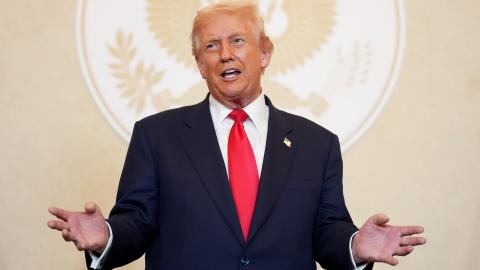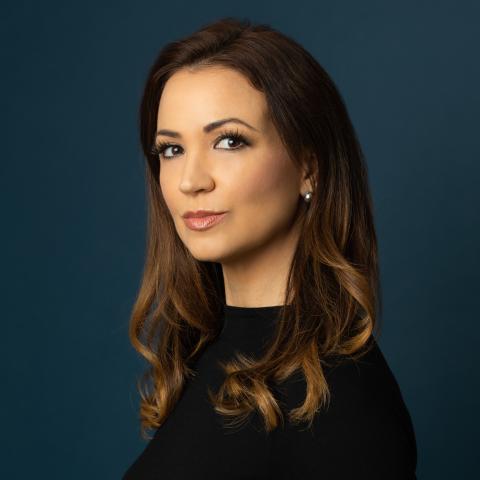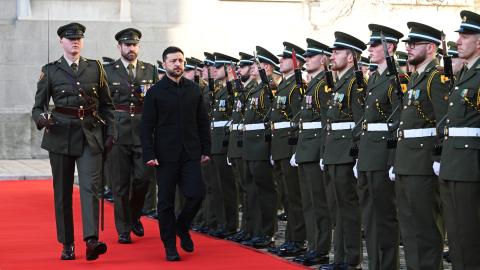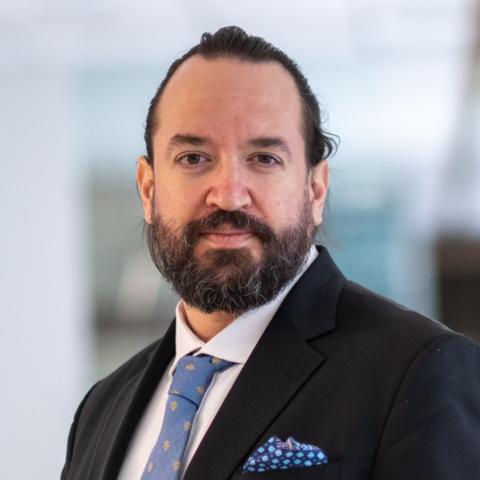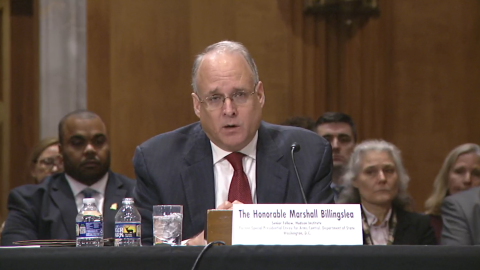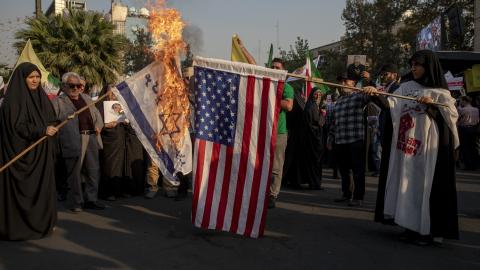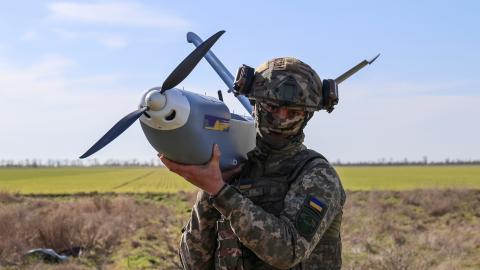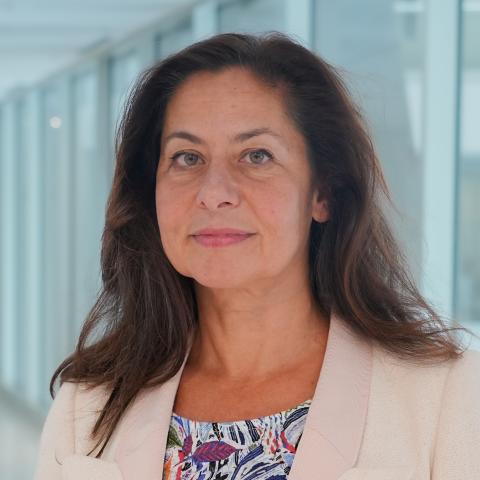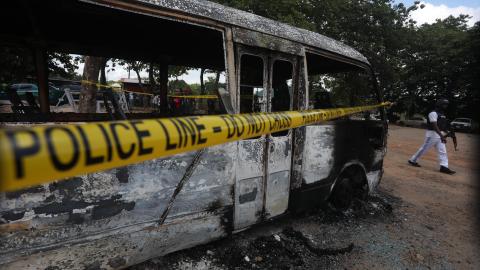The Boko Haram1 conflict remains one of Nigeria’s longest active insurgencies, if not the longest, and one of the most destructive conflicts in recent African history.2 According to the Council on Foreign Relations (CFR) Nigeria Security Tracker, in the span of seven years (June 2011–June 2018), there were 2,021 Boko Haram–related incidents in which 37,530 people were killed.3 In the same period, the Armed Conflict Location and Event Data Project (ACLED) identified 3,346 Boko Haram–related incidents in which 34,261 people were killed.4 The Boko Haram conflict has been ongoing in some form or another for more than 20 years, since approximately 2002, when the late Mohammed Yusuf established his preaching movement, which eventually evolved into an insurgency. After Nigerian police extrajudicially killed Yusuf in 2009, his successor, Abubakar Shekau, transformed the movement into an even deadlier insurgency.
Boko Haram has undergone different phases throughout its history. I identify three key periods: the pre-insurgency period of 2002–2009; the peak insurgency period of 2009–2015; and the post-peak phase, from 2015 to the present.5 This paper focuses on the latter period, which began with Boko Haram’s oath of allegiance (bay’ah) to the caliph of the Islamic State (IS) and its official reorganization as the Islamic State’s West Africa Province (ISWAP).6 In August 2016, following an internal leadership struggle, ISWAP splintered into two factions. Shekau led one faction as the revived Jama’at Ahl al-Sunna li’l-Da’wa wa’l-Jihad (JAS, the original name of his insurgency) and ISWAP as a distinct faction under the leadership of Abu Musab al-Barnawi, the son of Mohammed Yusuf. Following the death of Shekau at the hands of ISWAP in 2021, JAS has further devolved into several autonomous constituent units (which nonetheless remain loyal to overall JAS leader Bakura Doro, Abubakar Shekau’s successor). Since 2016, the intensity of Boko Haram’s attacks and its influence have reduced drastically, compared to its peak period between 2012–2015. During that time, it conducted near-daily attacks that led to huge civilian casualties, making it the deadliest terrorist group in the world at one point.7
Boko Haram continues to be one of the world’s deadliest armed groups, according to ACLED data, although there have been fluctuations in the frequency of attacks and rate of fatalities. For example, there were approximately 2,700 Boko Haram–related fatalities in 2018, a significant reduction from the 11,500 reported in 2015.8 As of 2024, an extreme conflict index level continues to characterize Nigeria, largely due to activities involving bandits (rather than Boko Haram) operating in the northwest.9 Nonetheless, the various factions of Boko Haram remain deadly and continue to conduct significant attacks in the northeast and around the Lake Chad area, if perhaps with less frequency than before. For example, on September 5, 2024, ISWAP killed at least 170 villagers, mostly boys and men, from Mafa village in Yobe state after warning the inhabitants against returning to their village.10 On October 28, 2024, suspected Boko Haram (JAS) militants killed 40 Chadian soldiers in a raid on a Chadian military base in the Lake Chad Island of Barkaram.11 And on January 27, 2025, ISWAP carried out a deadly suicide attack on a Nigerian military convoy in the Timbuktu Triangle between Borno and Yobe states, leaving 25 soldiers dead.12
In 2025, ISWAP began deploying weaponized drones in its attacks against military targets. One example is the March 24 attack on the Nigerian military’s forward operating base (FOB) in the Wajiroko area of Borno state.13 This is a worrying development in the insurgents’ military capabilities, as the group had previously used drones only for surveilling targets and recording propaganda videos. The low cost of commercial drone technology makes it easily accessible to both insurgent and counterinsurgent forces, a dangerous trend in modern warfare.14
Why is Boko Haram still able to carry out these deadly attacks in Nigeria and around Lake Chad, and why does it continue to present a significant security threat even in its degraded state? Equally important, how should Nigeria and its regional and international partners respond to these threats? These are the major questions that this paper attempts to answer. To understand Boko Haram’s continued relevance and danger, it is necessary to accept its transformation since 2015, which is marked more by competition, rivalry between factions, and the quest for survival and territorial control than by a coherent grand strategy for expansion and conquest as it demonstrated in the pre-2015 era.
For instance, the splits between JAS and Ansaru, an early splinter that formed in 2012, and between JAS and ISWAP in 2016 were rooted in ideological differences (for instance, disagreements over Shekau’s indiscriminate application of takfir, or excommunication,15 and attendant attacks against the Muslim populace). However, the continued fratricidal conflict between ISWAP and the many constituent units of JAS, particularly since Shekau’s death in 2021, has little to do with ideological disagreement in my assessment. The strong ideological motivation that guided Boko Haram under Mohammed Yusuf from 2002 to 2009 appeared less credible under Shekau’s leadership (2010–2021) due to Shekau’s greed and indiscriminate targeting of Muslim civilians. The original grand mandate of establishing a Shari’a state in Nigeria has taken a further hit from the infighting between JAS and ISWAP since 2016. In my view, rivalries between JAS and ISWAP commanders and their personal mundane interests are more important factors in the insurgency’s dynamics than ideological divisions at this stage. Therefore, this paper argues that Boko Haram is in a new stage, “Boko Haram 2.0,” which requires fresh insights into the group using new lenses and angles.
To provide these fresh perspectives, I will first review established scholarship and views of Boko Haram. This will entail a discussion of the earlier period, 2002–2015, which covers the pre-insurgency and peak insurgency phases, and an overview of the different theories that scholars typically offer for Boko Haram’s emergence. The second part of this essay will analyze the transformation of Boko Haram since 2015. In the conclusion, I will consider the policy implications of this new phase of Boko Haram.
This paper benefits from the arguments that several contributors present in a forthcoming volume on Boko Haram that I edited, as well as from field research in northern, central, and southern Nigeria in the 2010s. In addition, it draws from more recent analysis of JAS and ISWAP propaganda videos and other open-source material.
Boko Haram 1.0: The Evolution of Boko Haram from Nigerian Islamic Preachers to the Islamic State in West Africa Province: 2002–2015
Phase 1: The Pre-Insurgency Period (2002–2009)
Formed in the early 2000s,16 Boko Haram spent the first few years of its existence in Islamic activism, which mainly involved challenging the conservative Muslim leadership in northern Nigeria for what it perceived as their corruption and un-Islamic practices.17 Boko Haram was at this stage a socio-religious movement whose anti-government, anti-corruption, and Islamic fundamentalist messages resonated with a large majority of people across northern Nigeria and neighboring countries (i.e., Chad, Cameroon, and Niger) who felt a genuine disillusionment with their political and religious leaders. During this period, under the leadership of its charismatic founder Mohammed Yusuf, Boko Haram had up to a million followers.18 The group’s modus operandi at this stage was Da’wah (proselytization) through fiery preaching against political and religious leaders. Its leaders, including Yusuf and his associates Abubakar Shekau and Mamman Nur (both now dead), evoked the successful nineteenth-century West African jihad of Uthman Dan Fodio as they advocated for the return to a supposedly true practice of Islam. Fodio had done the same when he had condemned polytheism, paganism, and the un-Islamic practices of the Hausa rulers.19
Interestingly, Uthman Dan Fodio’s jihad remains a unifying theme and a powerful rallying force among conservative and dissenting Islamic groups in northern Nigeria. There is no doubt that Dan Fodio remains an inspiration for northern Nigerian traditional and dissident Islamic groups alike. Boko Haram exploited this important history to its own ends in its quest for power and hegemonic control over the production and consumption of Islamic knowledge and practices. Initially, it sought to push the conservative Muslim leadership to implement “purer,” more comprehensive Shari’a law in northern Nigeria. However, when the group felt that it could not trust the established religious leadership to do this, its position became more radical and aimed at usurping religious authority and becoming the spiritual gatekeeper of the Islamic religion in Nigeria.20 However, I believe that during this pre-insurgency stage, politics, understood as a quest for power and control by working within the political system, was less a calculation in Boko Haram’s campaign. The weight of this argument lies in Boko Haram’s hijrah,21 which in modern parlance certain Islamic sects use to describe their withdrawal from what they perceive as a corrupt and un-Islamic state. A faction of Boko Haram, under early Boko Haram associate Muhammad Ali, withdrew to a remote commune outside Kanamma town in Yobe state, where it sought to practice its version of Islam without the adverse influence of the corrupt Nigerian state.22However, the tension between this sect and the Kanamma community led to the intervention of the Nigerian police and eventually a clash between the sect and the police and military, who killed and arrested many sect members.23Mohammed Yusuf did not participate in the commune, preferring a more strategic approach that included engaging northern Islamic scholars and clerics in theological debates.
The Kanamma incident and other early history of the movement lead me to believe that Boko Haram might not have escalated into violence if the Nigerian state had responded differently. Before 2009, it had relatively limited clashes with members of the security forces. These include the 2003–2004 synchronized attacks on several police stations in the towns of Kanamma and Geidam in Yobe state by the members of the Kanamma compound that led to the death of many policemen and a reprisal attack from the military that led to the death of about 18 Boko Haram members. In 2004, group members conducted two more attacks on police stations and convoys in Borno state and along the border with Chad. The military intervened and engaged Boko Haram for two days, leaving up to 27 members dead.24
There was also evidence that members had started hardening their stance during this period. The assassination of the influential Muslim cleric and Yusuf’s one-time mentor, Sheikh Ja’afar Adam, by suspected members of the “Taleban,” i.e., the early sect that had previously split from Boko Haram and established the commune in Kanamma, supports this view.25 However, the climax of the phase that transformed Boko Haram into an insurgency occurred in summer of 2009, when Governor Ali Modu Sheriff’s government in Borno state dispatched a military and police task force that clashed with members of the sect over their refusal to wear motorcycle helmets. Boko Haram interpreted this as a ruse to attack the sect. The incident set off a chain of events marked by several days of fighting with the joint task force, which culminated in the deaths of up to 800 Boko Haram members, the destruction of its mosque and headquarters in Maiduguri, and the extrajudicial killing of Yusuf by Nigerian police.
Phase 2: The Insurgency Period (2010–2015)
The scholarly consensus26 in the Boko Haram literature is that the July 2009 clashes catalyzed Boko Haram’s transformation from a socio-religious movement into an insurgent organization, expediting its jihadist agenda. This is true to an extent. Nonetheless, the Nigerian state had a one-year period between 2009 and 2010 when Boko Haram was in hiatus and willing to negotiate. According to one individual involved in early, backchannel negotiations with members of the sect, Boko Haram expressed legitimate grievances that it wanted the Nigerian government to address in this time. These included (1) prosecuting the security forces that had killed Mohammed Yusuf extrajudicially; (2) releasing members of the sect whom the state had unlawfully detained, particularly wives and children of Boko Haram members; (3) rebuilding the group’s destroyed mosque and headquarters; and (4) allowing sect members freedom of worship.27 However, the Nigerian government missed this window of opportunity to deescalate the tensions and possibly halt Boko Haram’s transformation into an insurgency. The government instead maintained a hardline position.
President Goodluck Jonathan’s administration had little to no understanding of Boko Haram and responded in a typically heavy-handed manner. Initially, Boko Haram
[was] running from the Nigerian state. They were not fighting the Nigerian state. They were trying to create an ideal Islamic state. It was actually the Nigerian state that was responsible for radicalizing the BH people, in the manner they misunderstood them, in the manner they were attacking, in the manner they fought them, in the manner they killed Mohammed Yusuf, and in the manner they subsequently handled the post-Mohammed Yusuf. . . . So the Nigerian state essentially radicalized BH and turned them as hostile.28
Some scholars, however, accord little importance to the role that the Nigerian state played in Boko Haram’s violent transformation, believing instead that Boko Haram was already on the pathway of jihad before 2009.29 These scholars mostly belong to the “global” school of thought.30 To them, there is no alternative explanation for Boko Haram’s declared goal of Islamizing Nigeria and ensuring the rule of majority Muslims in the country other than jihadist ideology. Such scholars often rely on a literal interpretation of primary texts that Boko Haram produces and publishes. The global school of thought stands in contradistinction to the “local” school of thought, that is, scholars who give primacy to the idea of Boko Haram as a group with local grievances and targets.31 Other scholars maintain more of a middle-of-the road position,32 and I count myself among them.
Boko Haram is at once global and local. We cannot separate its local drivers from its global goals and influences. Although both schools of thought recognize ideology as a driver for Boko Haram, the global scholars accord it greater importance. These ideological-leaning scholars also associate the group with transnational terrorist organizations and therefore global goals. Boko Haram’s connections to international jihadist groups prior to 2015 have been the source of scholarly debate. Some have speculated about early external connections, especially to al-Qaeda and its regional affiliates. They base such hypotheses on Boko Haram’s sophisticated attacks (particularly suicide attacks and increased skill in making improvised explosive devices from the 2010s onward), some (limited) documented correspondence between the leadership of Boko Haram and al-Qaeda networks, and reports of a limited transfer of funds from al-Qaeda to Boko Haram (the latter of which Abubakar Shekau eventually confirmed).33
Undoubtedly, ideology plays a central role in Boko Haram’s origin and transformation. However, under the leadership of Abubakar Shekau (2010–2021), the group’s religious credentials took a nosedive as Shekau developed a cult personality. Throughout Boko Haram’s evolution—especially since 2015, as I will argue later—ideology became less prominent as a strategic motivation. Shekau became power-drunk and unrestrained in his indiscriminate attacks, which often targeted the wider Muslim population within Boko Haram’s area of operations as well as members he viewed as straying from his doctrine. He thus faced criticism from other commanders within the Boko Haram ranks for such “un-Islamic” acts and for his display of ostentatious greed and appropriation of the “spoils of war” for himself.34 Evidence of the declining ideological motivation in Boko Haram’s campaign thus appears more in the actions of its leaders than in its statements. Explanations of the insurgency based exclusively on Boko Haram’s official statements and propaganda thus can no longer suffice.
The ideological incoherence of Boko Haram began to emerge within a few years of the insurgency. In the first two years of the insurgency period (2009–2011), the group generally engaged in targeted and systematic attacks. Its targets included the Nigerian security forces, traditional Islamic clerics, local politicians, and churches and other targets associated with Christians. Similarly, Boko Haram attacked police stations, military barracks, and other security checkpoints and officers. It was clear that the motive was partly revenge, which is one of several theories that experts have posited to explain Boko Haram’s rise.35 The group attacked these targets in part to avenge the extrajudicial killing of its leader, Mohammed Yusuf, and other members as well as to reconstitute its force by freeing detained members and acquiring weapons from the military stockpile. For example, on September 7, 2010, Boko Haram attacked the federal prison in Bauchi state, freeing roughly 730 prisoners including dozens of its members.36 The choice of targets at this phase also reflected its anti-democracy, anti-Western, and anti-Christian dispositions.
However, as early as 2012, the attacks became more indiscriminate. Boko Haram increasingly began attacking the country’s Muslim population. For example, on January 20, 2012, it carried out a horrific attack on a mosque in the largest city in northern Nigeria, Kano, leaving approximately 185 worshippers dead.37 In addition to leading this campaign of terror, Shekau excommunicated Boko Haram members and denounced them as apostates, leading to the first internal split and the emergence of Jama’at Ansar al-Muslimin fi Bilad al-Sudan (the Group of Defenders of Muslims in the Lands of the Blacks), generally referred to as Ansaru, in 2012. Ansaru is Hausa-dominated and based in northwest Nigeria, unlike the core Boko Haram, whose stronghold is in the northeast and whose leadership is heavily Kanuri.38 Ansaru sought to differentiate itself from Boko Haram by aligning with transnational regional jihadist groups and focusing on foreign targets.39
Scholarship generally suggests that for either an insurgent group or a counterinsurgent force to be successful, it needs the support of the population—hence, winning hearts and minds is paramount.40 Conversely, when a group turns against the local population, this might indicate the group’s success depends less on local support and more on external factors. Interestingly, Boko Haram defies this logic. Under Shekau, it did not enjoy the same popular support that it did during the pre-insurgency years under Yusuf. The northeastern populace, largely Muslims, became double victims of Boko Haram’s constant terrorist attacks and the Nigerian military’s collective punishment. Both Boko Haram and the military perceived the people as accomplices to the other camp. Neither side tried to “energize and mobilize [popular] support and deny energy and mobility to the enemy’s support base.”41 It is, however, difficult to accept the argument by some “New Terrorism” or “Fourth Wave” theorists42 that ideological terror groups such as Boko Haram are irrational and are capable of using violence only for their own sake rather than as a means to an end. Daniel Byman provides a succinct characterization of Salafi-jihadist groups such as Boko Haram: The “highly ideological nature” of their movement “makes it prone to division.”43 Byman argues further that “despite the common critique that Salafi-jihadist agenda is entirely destructive, in reality many groups care tremendously about ruling.”44 For all their peculiarities, Salafi-jihadist groups such as Boko Haram would require certain conditions, just as non-Islamic insurgencies would, to win. These conditions include a weak state (characterized by feeble or overreactive counterterrorism) and a territorial haven.45
As the source I interviewed who engaged in initial discussions with Boko Haram between 2010 and 2012 alluded to, the Nigerian state’s response to the group did not account for these nuances. Instead, the state excessively militarized its response from the start. This “war on terror” approach contributed to an escalation of the conflict, even as it has also been necessary to some extent.46 For example, Boko Haram raided the highly fortified Giwa Barracks in Maiduguri, which were holding suspected Boko Haram prisoners who had mostly been swept up in mass arrests without due process. On March 14, 2014, the Nigerian military carried out a reprisal attack by gunning down 600 unarmed prisoners whom the raiders had freed.47 The military had conducted a similarly indiscriminate attack on the residents of Bama town following Boko Haram’s May 7, 2013, coordinated attacks there, killing an estimated 2,000 civilians in reprisals.48
Boko Haram 2.0: Evolution since 2015
Boko Haram entered a new phase on March 7, 2015, when Abubakar Shekau swore an oath of allegiance to Abu Bakr al-Baghdadi, the then-caliph of the Islamic State, thus officially transforming Boko Haram into ISWAP. Shekau was the emir of ISWAP until August 2016, when al-Baghdadi recognized Abu Musab al-Barnawi, the son of the late Mohammed Yusuf, as its new leader after rival factions of the Nigerian group failed to reach an agreement on their leadership. This resulted in the bifurcation of the movement into JAS (the “original” group that Shekau continued to lead but that the Islamic State no longer recognized) and ISWAP (which the Islamic State recognized and which eventually became the stronger of the two factions). Since 2016, both the leadership and configuration of JAS and ISWAP have changed multiple times.49
The 2015 pledge marked the first time the group formally aligned itself with a transnational terrorist organization. Shekau swore his allegiance to the Islamic State when Boko Haram was in a weakened position owing to the increasing intensity of attacks from the increasingly better coordinated Multinational Joint Task Force, the South African mercenary group known as Specialized Tasks, Training, Equipment and Protection (STTEP, which had been hired by the Nigerian government),50 and local vigilante groups in northeastern Nigeria known as the Civilian Joint Task Force (CJTF). The benefits of the new relationship between the Islamic State and Boko Haram were not unidirectional. The Islamic State also stood to gain immensely from an already established jihadist organization operating in a country with one of the largest Muslim populations in the world. Indeed, it had started courting Boko Haram around 2014.51
Unsurprisingly, however, the partnership between Shekau and the Islamic State was short-lived. Shekau’s pledge was strategic, but he did not intend to submit full control of his organization to the Islamic State. He revived the parent body, JAS, after ISWAP deposed him as emir. However, the ISWAP faction became even stronger than JAS and benefited from its continued and substantial ties to the Islamic State, which helped refine its combat capabilities and governance strategy. ISWAP started to have success when it shifted to renewing strategic attacks on military targets and limiting attacks on civilian targets, unlike JAS. This ushered in a new phase of the Boko Haram conflict.
Boko Haram 2.0 is defined largely by a strong rivalry and intra-group competition between ISWAP and JAS. JAS itself has decentralized and is now divided into three main groups in the northeast:
- The Ibrahim Bakura Doro (known as Bakura), which is the main JAS group, presently operating on the islands of Lake Chad along the borders of Chad and Niger
- Aliyu Ngulde’s group, operating in the Mandara Mountains and Gwoza Hills along the Nigeria-Cameroon border
- The Dar al Gazuwa group (Bula Dalo or Bula Daloye), operating around Bama vicinity and under the command of Alhai Kale 52
Analysts suspect another JAS faction, under the leadership of figures such as Umar Taraba and Sadiku (Sadiku Faction), is operating in northwest and north central Nigeria.53 This fragmentation of JAS implies “weakness, decline and a loss of control.”54
Shekau’s death at the hands of ISWAP in 2021 has not united the JAS and ISWAP factions, which puts a question mark on the centrality of ideology in the insurgency at this stage. The death of Shekau reveals a profound problem facing Boko Haram in its ostensible political objectives: Material interests, identity politics (ethnicity), and personal loyalty to specific commanders seem to be more important than the general cause. Vincent Foucher and Maman Inoua rightly posit that JAS resists ISWAP’s bureaucratic governance, rather preferring “sectarianism, predation and clientelism.”55 The same issues that caused Ansaru’s split in 2012—namely, Shekau’s targeting of Muslim civilians and use of takfir (or, after 2021, that of his successors)—remain drivers of the JAS and ISWAP rivalry today.
Previously there was little to no violent competition between Boko Haram and Ansaru—if anything, there was cooperation and/or the prospect of collaboration between the two factions.56 However, the rivalry between JAS and ISWAP today is bloody. As Vincent Foucher aptly observed, “Ansaru’s split did not stop the ascent of JASDJ.”57 In contrast, the split between JAS and ISWAP has transformed into open confrontation and a battle for control of territory and members. Both groups have scored significant victories (including defections to the opposite camp), although ISWAP has enjoyed the better outcome so far. While ISWAP gained a significant number of defectors from JAS between 2015 and 2021, the Bakura faction seized a number of ISWAP camps in 2023 and 2024. The two groups have published propaganda videos of their victories against each other since 2021.58
The Nigerian military, and to some extent the civilian population of the northeast, has gained from the internecine warfare between the Boko Haram factions, while the jihadist campaign of expansion has suffered. The Nigerian military is involved in psychological operations (psy-ops) that include dropping leaflets in insurgent-controlled areas of the northeast to encourage intelligence gathering from the civilian populace (a demonstration of the improving civil-military relations) and encourage insurgents to surrender and enroll in the amnesty program.59 The military is also deploying the media strategically to project victory and offer demoralized JAS and ISWAP members a better alternative through the amnesty and reintegration programs if they surrender.
The benefit of the inter-factional warfare and more successful counterinsurgency campaign is most visible in the lower number of civilian casualties since 2015 compared to the preceding peak insurgency period.60 It is important to note that open-source conflict datasets struggle to capture the full quantity of civilian casualties, but even so, the relative decrease apparent in such datasets points to a reduction in the intensity of the conflict. Furthermore, it is undeniable that thousands of JAS and ISWAP members and their families have surrendered to the Nigerian government and benefited from official amnesty programs through Operation Safe Corridor61 as well as the Borno-state-led Borno Model, which claims to have welcomed over 160,000 former insurgents and their family members who voluntarily surrendered.62 The Borno Model’s unique approach involves transitional justice (including deradicalization, rehabilitation, reintegration, and resettlement) for former Boko Haram combatants, some of whom then deploy as part of a hybrid force to fight their former insurgent colleagues. Yet, despite this progress, JAS and ISWAP continue to show the capacity to attack both the military and the public.
A continued threat
JAS and ISWAP “still hold significant territory, exert influence, and maintain fighters in their ranks.”63 Matthew Kukah, the influential Catholic bishop in northern Nigeria, rightly observes that it is accurate to view Boko Haram more as an “idea[HS1] than a human being to be attacked.”64 Yet after more than two decades, the Nigerian government has not yet properly conceptualized the problem.
I suggest two concepts that are useful for understanding Boko Haram. First, the group can be defined as “an extremist group that is part of the historical trend of Islamic reforms in northern Nigeria which has instrumentalized the Islamic religion in its pursuit for power and control over the interpretation of the Islamic religious texts and practices.” Second, Boko Haram is “an extremist organization that has been radicalized by the violent nature of the Nigerian state and challenging its legitimacy which includes its (in)ability and/or (un)willingness to provide for the welfare of its citizens and improve their standard of living as well as manage the competing interests of the diverse groups.”65
Regarding the first concept, Boko Haram fits the tradition of Islamic resistance groups of the region, beginning with the nineteenth-century jihad of Uthman Fodio and also visible in the rise of the Tijaniyya against the established Qadriyya Sufi order between 1805 and 1960.66 Similarly, in the late twentieth century, several movements emerged in northern Nigeria as challenges against the existing religious hierarchies of the region:
- Izala, the main Salafist organization in Nigeria established in 1978 to fight the perceived Bid’ah (innovation) and Shirk (“association,” ascribing to someone a partnership or rivalry with Allah) that the Sufi orders practiced
- the Yan Tatsine movement, a militant Quranist movement formed by Muhammad Marwa, aka Maitatsine, in the 1970s that led to several destructive riots in the early 1980s
- the Islamic Movement of Nigeria, a Shi’ite organization that the Iranian Revolution inspired, led by Sheikh Ibrahim Zakzaky
While each of these movements shared a desire to establish a more “pure” Sharia state in northern Nigeria, they differed significantly in the practical means and ends of this vision. These include their preferred methods of achieving such a state, their level of tolerance for non-Muslims in any Islamic society, and the possibility of existing alongside the secular state for the time being.67 These different movements underscore the heterogeneity of Islamic religious interpretations and practices in northern Nigeria.
The Boko Haram conflict is primarily an intra-Muslim conflict in which different groups battle for hegemony. Hence, throughout its stages of evolution, Boko Haram has shown a deep-seated internal friction regarding its ideology, tactics, and strategy, which has caused splintering and fragmentation. The splintering of a terrorist organization has a significant impact on its durability. It can lead to either more violence or the end of the insurgency. According to Evan Perkoski, this depends on whether the disagreement at the heart of the fracture relates to strategy, which will most likely “create splinters that radicalize, attack rivals and undermine peace,” or to ideology and leadership, which “are less likely to produce new organizations that ramp up violence and escalate their operational profiles.”68 Boko Haram shows elements of both. For example, Shekau’s indiscriminate use of takfir and JAS’s attacks on Muslim civilian populations caused the split between JAS and ISWAP. However, there have been multiple leadership tussles in each of these camps as well.
In terms of the balance of power between factions, ISWAP has shown its capability to deploy violence and may have outperformed JAS in terms of sophisticated attacks, especially between 2021 and 2023 after the death of Shekau. JAS, however, continues to surpass ISWAP in its violence against civilians.69 It appears that many more JAS members have surrendered to the Nigerian military rather than defecting to ISWAP.70 The rivalry is now a game of numbers, including of territories controlled and fighters in each camp, which some scholars find are indeed crucial factors in the durability of insurgencies following a split.71 As Vincent Foucher’s research show, JAS and ISWAP maintain considerable strength in this regard.72
Yet numbers alone do not determine a group’s survival; strategy also shapes it.73 Here, ISWAP has the advantage over JAS in its greater use of nonviolent strategies of control, such as governance and administration (in addition to its military campaign). JAS is also refining its methods of governance, however—the Bakura faction is implementing taxes in the areas it controls,74 and there are reports that the Sadiku-led faction in northwest Nigeria is enforcing compliance and raising revenue through taxes on local populations.75
Regarding the second concept I propose, the influence of the Nigerian state’s violent nature is pervasive throughout the different phases of Boko Haram’s evolution. For instance, in 2009, the security forces’ destruction of Boko Haram’s mosque and center, arrests of family members (including wives and children) of Boko Haram members, and extrajudicial killing of Mohammed Yusuf transformed Boko Haram from a social movement into an insurgent group. In the peak insurgency period of 2010–2015, other government actions helped to mobilize a degree of popular support for the group, albeit support that Boko Haram typically failed to capitalize on. Among these were gross violations of the human rights of citizens of the northeast (often in the form of collective punishment), marked by the imposition of a federal state of emergency in Borno, Yobe, and Adamawa States in 2013. By 2012, Boko Haram had turned against the people and degenerated into a full-blown terrorist organization that attacked public places including churches, mosques, marketplaces, schools, and other public infrastructure. Even though the group has been in decline since 2016, it has managed to stay relevant and active, due in part to the Nigerian state’s continuously militarized response.
Beyond my conceptualization of Boko Haram as an Islamic resistance movement radicalized by the violence of the Nigerian state, other factors perpetuate today’s conflict, as contributions from our forthcoming volume illustrate. Marc-Antoine Pérouse de Montclos concludes that “Islam will continue to be manipulated to legitimize revolts that can turn out to be quite violent. Ultimately, the fundamental problem indeed lies in governance and the redistribution of wealth in one of the poorest regions in the world.”76 James Barnett and Murtala Rufa’i provide a detailed analysis of how Boko Haram and its factions attempt to exploit inter-communal conflict in northwestern Nigeria through connections with other armed networks, such as bandit gangs, as they seek to expand their influence beyond their longtime base in northeast Nigeria.77 This scathing assessment by Alessio Lochi likewise succinctly captures the criminal or material dimension of the conflict: “ISWAP shakes hands with local power-brokers and ensures the continuity of supply chains in exchange for certain benefits; in the public space, though, ISWAP condemns the same establishment accused of perpetuating an obscurantist and fundamentally wrong form of Islam.”78 For Usman Tar and Sasilkar Banu suggest the adverse impact of climate change on the Lake Chad Basin, an important source of economic survival for the surrounding population, may be paradoxically fueling the intensification of conflict in the region.79
How Should We Respond to the Threat?
To achieve durable peace, the Nigerian government must address the conditions behind the insurgency, including the absence of state and rural governance. Boko Haram and its factions thrive in these conditions. This is becoming clearer now as ISWAP and even JAS (to a lesser extent) entrench themselves in the administration and governance of neglected rural areas—for example, as Barnett and Rufa’i show in their forthcoming chapter, a faction of JAS has had some success imposing order on banditry-afflicted communities in the northwest and consequently gaining economically from those same communities. In many parts of the northeast, jihadists are establishing themselves as the de facto government by performing administrative duties even as they are equally capable of violence, challenging the government’s claim to the monopoly of force.
Importantly, the Nigerian military has improved in its counterinsurgency efforts, as there is now better coordination and cooperation among the different branches of the military than in the peak insurgency period.80 In combination with amnesty programs such as Operation Safe Corridor and the Borno Model, the improved military response has produced important results visible in the number of insurgents that forces have captured and in those that have voluntarily surrendered. However, in the absence of tangible development investment in the Boko Haram–ravaged communities and effective victim support programs, the gains from the amnesty programs will be futile. Authorities return former “rehabilitated” insurgents to communities that are often justifiably hostile to them, considering the government’s actions imply neglect of victims’ needs while rewarding insurgents.81 However, it is necessary to acknowledge Nigeria’s effort to achieve a political solution, which is a significant shift from its otherwise militarized response. The Borno Model is particularly worthy of mention because of the local transitional justice component, Sulhu, that it embodies. The populace of the northeast seems to be warming up to Sulhu, “a religious norm of mediation and reconciliation rooted in the socio-cultural precepts of northern Nigeria.”82 Nevertheless, as cases of recidivism rise with reports of some rehabilitated ex-insurgents returning to the terror groups,83 the government will need to prioritize socioeconomic development programs for victims of Boko Haram—including eventually in the hinterlands of northeastern Nigeria, where government presence has long been conspicuously absent.
The history of rebellion and insurgency in northern Nigeria shows that Boko Haram, like others before it, will likely disintegrate and end through internal frictions and contests rather than by government force. Therefore, a militarized response to Boko Haram will not end it. The government can hasten Boko Haram’s demise by denying it popular support, particularly by improving the environmental and material conditions of the people while also ensuring security, an effort that will entail a military role for the foreseeable future.
The government will hold the advantage if JAS and ISWAP continue to disintegrate and fragment. It is therefore likely that more insurgents will defect and/or surrender to the Nigerian government and military. The government’s amnesty programs have been relatively successful, such that it has begun replicating them in the northwest to demobilize the bandits.84 Demobilization alone will not necessarily produce durable peace in the absence of efforts to address the grievances and incentives that give rise to insurgency. The Borno Model is worth observing as it potentially offers a more comprehensive response that integrates humanitarian, restorative, and development components. By and large, Nigeria is in a better position to significantly degrade the Boko Haram insurgency as infighting and the battle for territorial control and resources undermine JAS and ISWAP’s religious credibility and brand. Any effective response would require a law-and-order approach, which will involve better training and equipping the Nigerian police, and will combine it with the provision of governance. Over time after the insurgency has degraded, the police (not the military) would need to secure the urban areas as well as the hinterlands.
The Boko Haram conflict entered a new phase in 2015 (“Boko Haram 2.0”) when Abubakar Shekau swore an oath of allegiance to the Islamic State. However, the contradictions that led to the movement’s early internal crisis and split in 2012 have continued into this phase and, in fact, have become much more pronounced. Boko Haram is a splintered movement that, since 2016, has been characterized by open confrontation among factions. The battle for supremacy between JAS and ISWAP has produced grave consequences for the jihadist group that include, among other things, further damage to its credibility and the loss of members due to either capture or willing surrender to the Nigerian military. Sadly, JAS and ISWAP continue to present threats and demonstrate the capacity to conduct significant attacks. The durability of these groups reflects not only jihadist military prowess but also their strategic efforts at governance in areas with a palpable state absence. The Nigerian government will have to improve governance and become visible if it aims to win over jihadists in the battle for the hearts and minds of the people.
